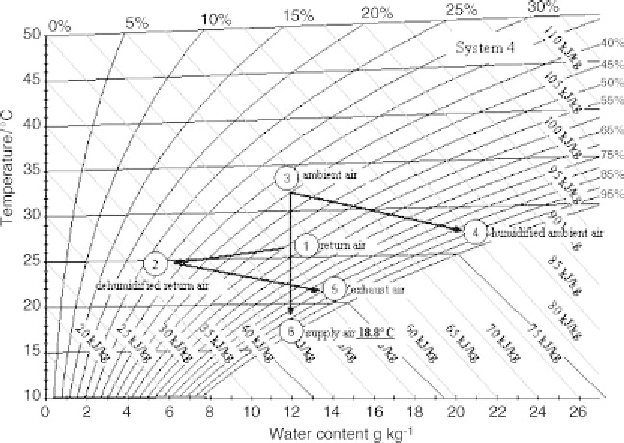Environmental Engineering Reference
In-Depth Information
the absorption enthalpy from the return air channels in the heat exchanger absorber
unit.
The main objective for all systems is to reach high cooling performances, which can
be calculated from the reachable supply air temperatures. The supply air temperature
was obtained using the experimental results from the different sorption units and a
theoretical model for the water-sprayed cross-flow heat exchangers (HES).
The paths describing the processes in the different systems are shown in the follow-
ing Mollier diagrams. The lowest supply air temperature of 18.8
◦
C can be reached
with the heat exchanger absorption unit (HEAU) in system 4 (figure 5.69). The liquid
flow rates were 100 l h
−
1
LiCl solution and 100 l h
−
1
water on the spray cooling side.
Path 1-2 describes the dehumidification of the return air in the HEAU, path 3-4 the
humidification of ambient air, path 2-5 the humidification of return air in the second
spray-cooled heat exchanger (HES) and path 3-6 the cooling of the supply air in the
HES.
The second lowest supply air temperature is reached by the contactmatrix absorption
unit (CMAU) at 19.4
◦
C in system 3 (Figure 5.70). Again, 100 l h
−
1
of LiCl solution
was used. Path 1-2 describes the dehumidification of return air in the CMAU, path
3-4 the humidification of ambient air in the HES, path 2-5 the cooling of return air
in the HES, path 5-6 the humidification of return air in the HES and path 3-7 the
sensible cooling of supply air in the second HES.
Figure 5.69
Supply air cooling of system 4 with a spray-cooled liquid desiccant heat exchanger
(HEAU)

Search WWH ::

Custom Search